Beauty ecommerce is growing. Take a look at the numbers: In 2023, the online beauty industry in the United States is expected to generate roughly $86 billion in ecommerce sales. This figure is forecast to reach over $94 billion by 2026.
According to a recent survey, global ecommerce sales in the health and beauty category were predicted to reach $449.6 billion in 2027.
For beauty brands—skin care, hair care, grooming, fragrances, period care, and more—there are many opportunities up for grabs.
If you don’t know what to focus on next, we’re diving into nine examples of successful beauty ecommerce sites. You’ll find the tools, strategies, missions, and products they use to hit huge milestones.
1. Hismile: Influencer-fueled global ecommerce powerhouse
Hismile is known for home tooth-whitening kits that have taken the world by storm. The brand launched in 2014 with its two founders’ $20,000 investment, which they turned into $200 million in revenue within six years.
In its early days, Hismile grew by working with micro-influencers in Australia and worked its way up to partnering with household names like Kylie and Kendall Jenner.
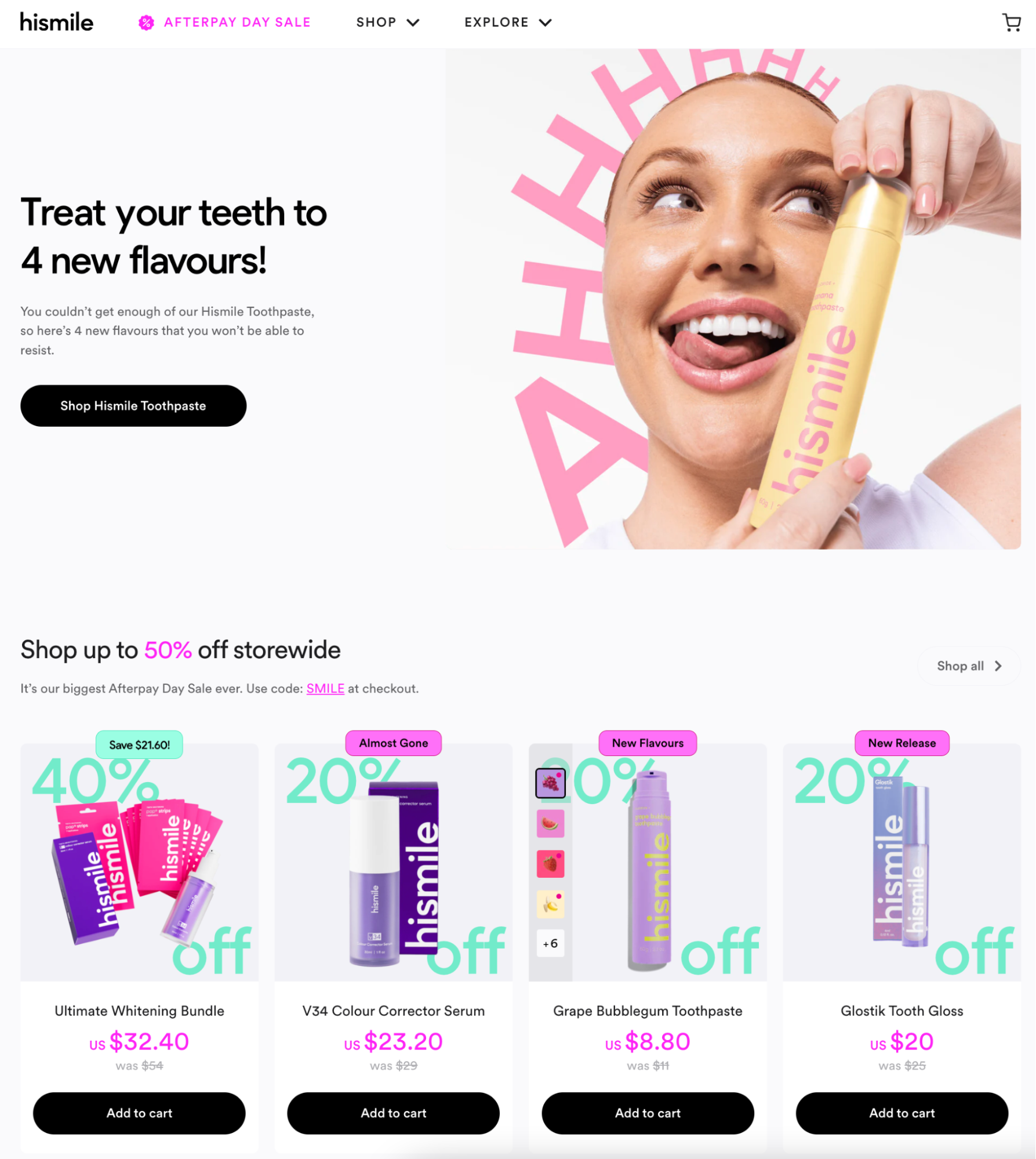
Hismile sells oral care products globally on its ecommerce site.
“You must have all the other stuff in your business churning at 100% before even thinking about reaching out to one of these big names,” Nik Mirkovic, co-founder of Hismile, told Collabstr.
As Hismile rose through the ranks, it had 2,000 brand ambassadors promoting its product at any one time. When you consider its paid ads on Instagram and Snapchat on top of that, it’s easy to see why Hismile’s website had to work smoothly for everyone.
That’s not just about withstanding heavy traffic, but also about looking great no matter which channel and country the visitor came from. Over time, Hismile implemented a global ecommerce approach that supports different currencies and shipping details through six storefronts.
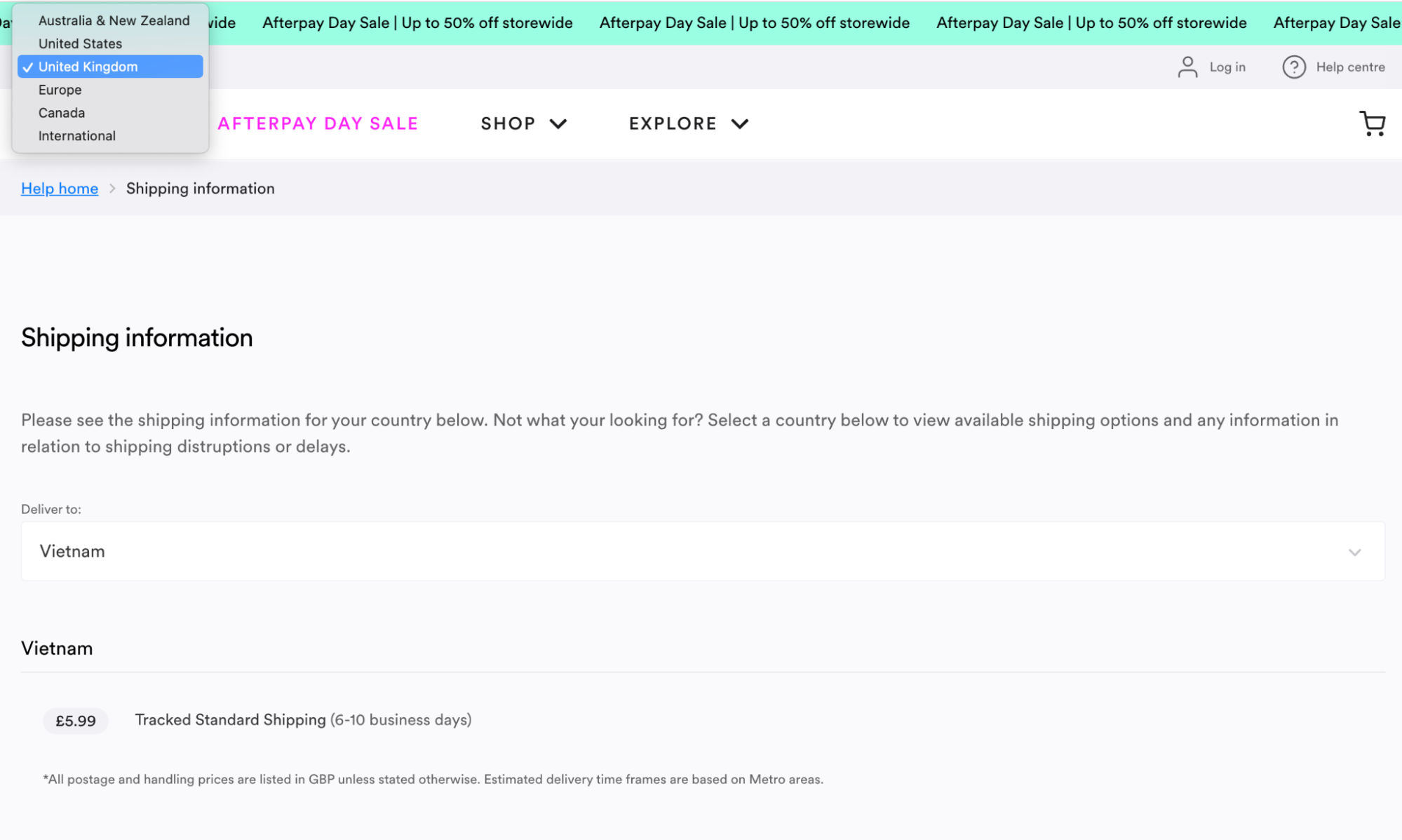
The shipping information page removes clutter and information overload and instead detects the visitor’s country to serve only the relevant pricing and delivery estimate.
Hismile has shipped products to more than 90% of the countries on Earth and grown its key market sales stronger.
“We initially went global on one website, but our sales multiplied by 10 in each market as soon as we sold our products in Australian dollars, US dollars, the euro, and British pounds,” says Nik.
2. ILIA Beauty: Tools that make online beauty shopping easy
ILIA Beauty is a clean beauty brand known for products that enhance natural beauty and protect the skin. ILIA’s products are sold through retailers like Sephora and Nordstrom. Lynda Berkowitz, ILIA’s CEO, told Glossy that direct-to-consumer sales through its website accounts for close to 50% of total sales.
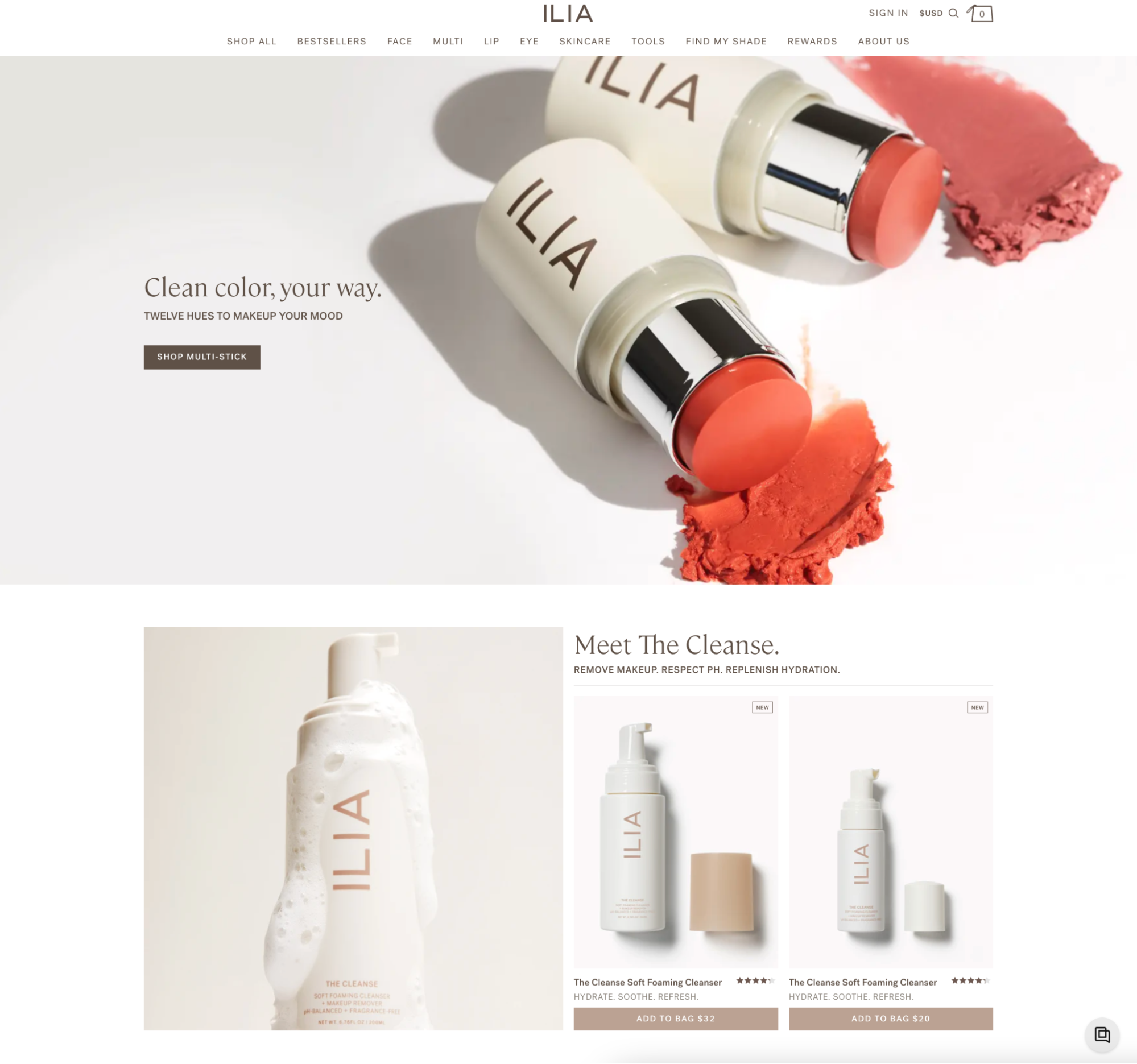
ILIA Beauty sees beauty and skin care as one on its cosmetic ecommerce website.
This is a result of an intentional effort to create an enjoyable online shopping experience. ILIA allows customers to find their ideal shade using the Skin Tint Shade Finder. They can upload a selfie to get matched by ILIA’s team or complete a shade match quiz.
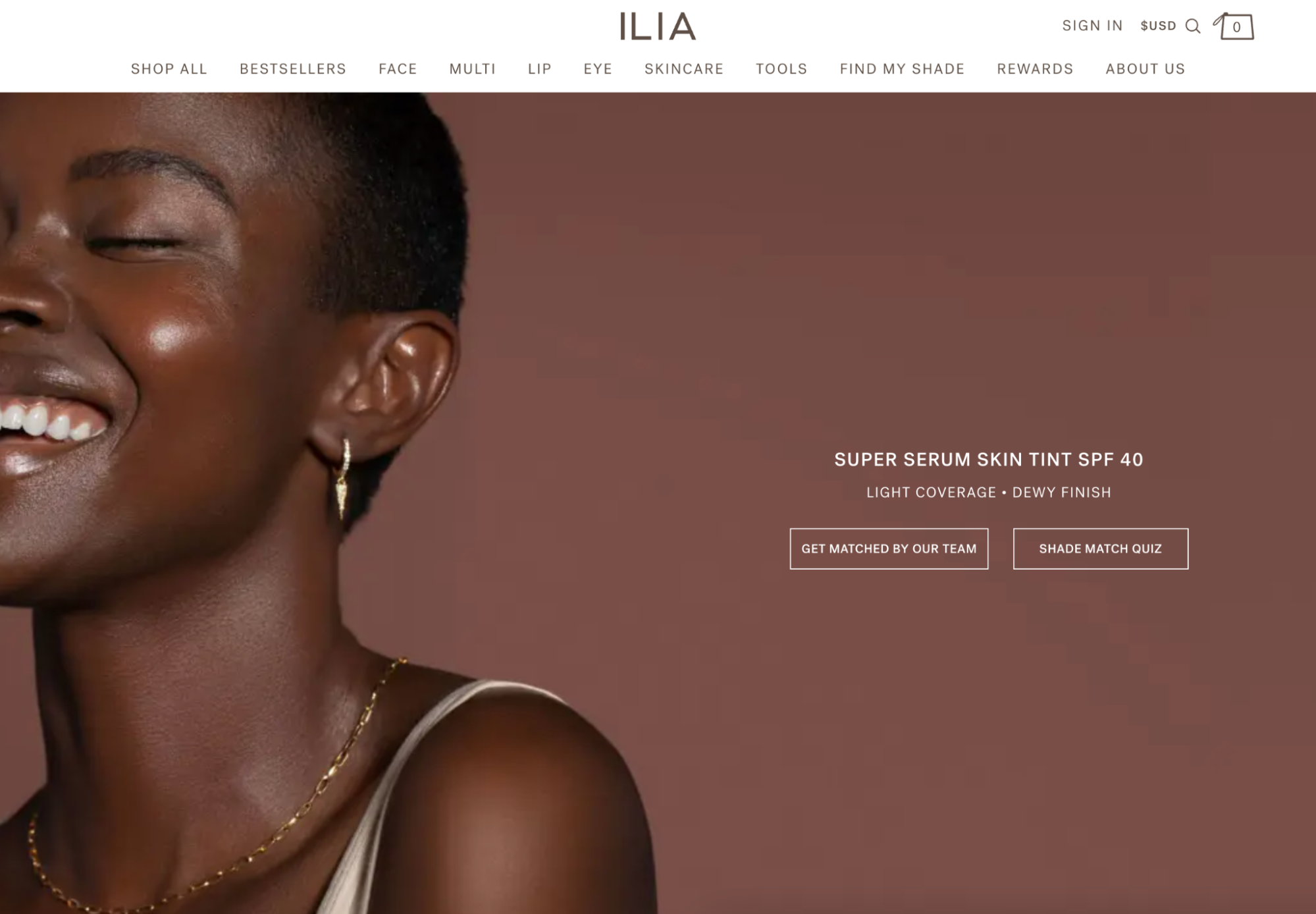
You can easily find the best product for you with ILIA’s Skin Tint Shade Finder.
The shade finder is easy to access through the menu at the top from any page, as well as from relevant product pages. Product pages also feature a “see it in real life” section, with photos and reviews uploaded by verified buyers:

Potential customers can see how ILIA Beauty products look on real people.
ILIA’s customers can rest assured they’ve picked the right product for their skin type, tone, undertone, and concern—and what they want to achieve with that product.
ILIA’s focus on online shopping experience decreased exit rates, improved bounce rates, and played a key role in its ecommerce success. Consider using tools that help customers make a choice and embedding genuine customer reviews to promote real results from your products.
3. Beauty Heroes: Putting customers first online and offline
Beauty Heroes is a healthy beauty discovery service. Its flagship offer is a membership that delivers products from a specific brand each month. Although the membership costs between $40 and $59 per month, each month’s delivery is valued at at least $100.
The current month’s brand of choice is emphasized at the top of the homepage, and the Join Now button follows you as you move around the page:
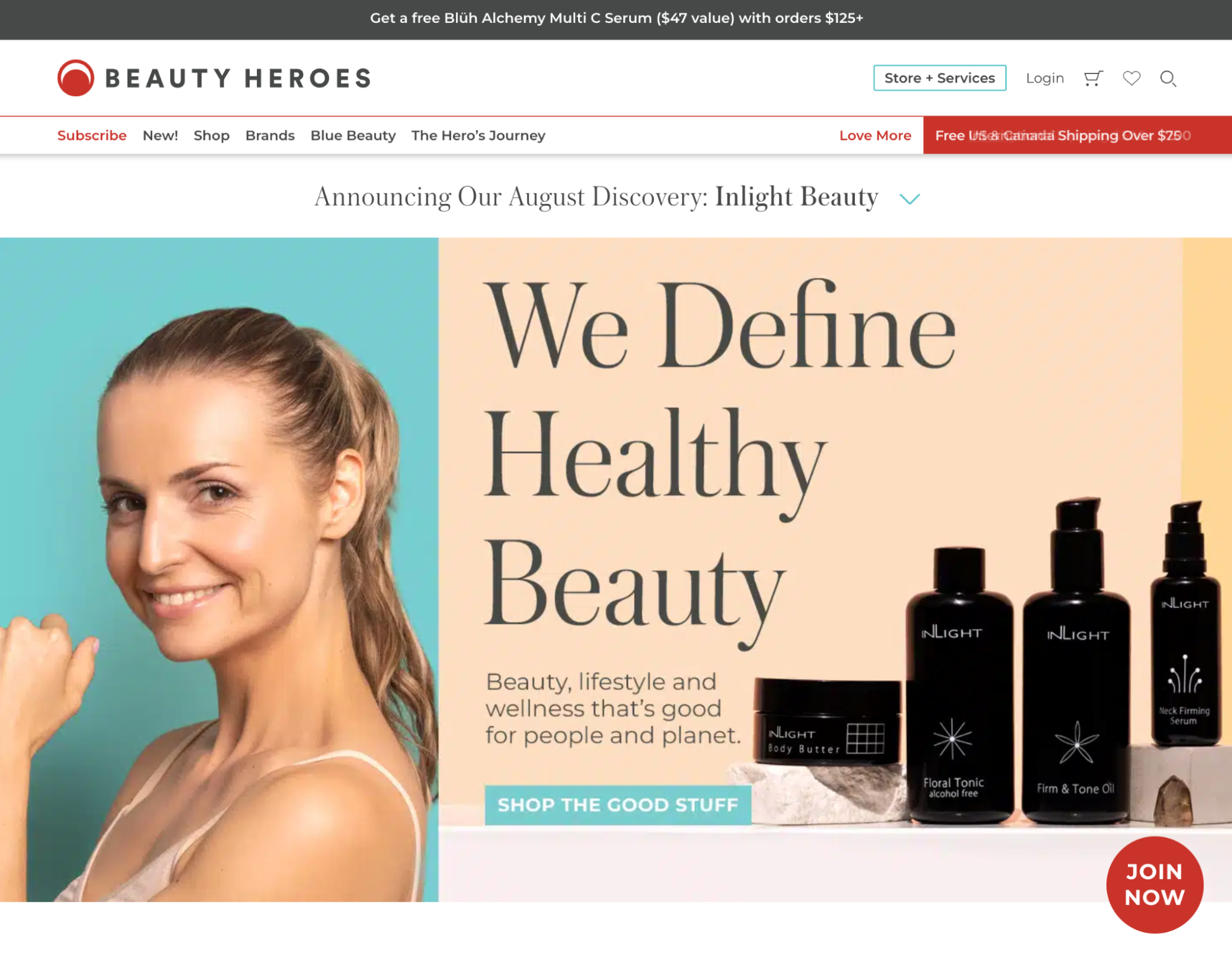
Beauty Heroes helps you find new beauty products on its website.
Members also receive a 15% discount on almost all products in the beauty store, including skin care, makeup, hair care, and lifestyle products.
In 2019, Beauty Heroes decided to take its online operations offline. Its Northern California store offers the same curation, ingredient standards, and philosophy found on its beauty website.
Opening a brick-and-mortar location meant Beauty Heroes now needed a way to efficiently manage customers wherever they buy.

“Our big requirement was that we wanted our customers to have one profile, whether they shopped online or in store,” says Jeannie Jarnot, founder and CEO of Beauty Heroes. The company now uses Shopify POS to keep complete customer profiles, history, and contact information in one place.
A curated subscription and an omnichannel presence lets Beauty Heroes excel at customer loyalty and retention.
4. 100% PURE: Leaning on customer feedback and rewards
100% PURE is a natural and organic cosmetics retailer. It has two brick-and-mortar locations in the US and a global ecommerce presence in more than 30 countries.
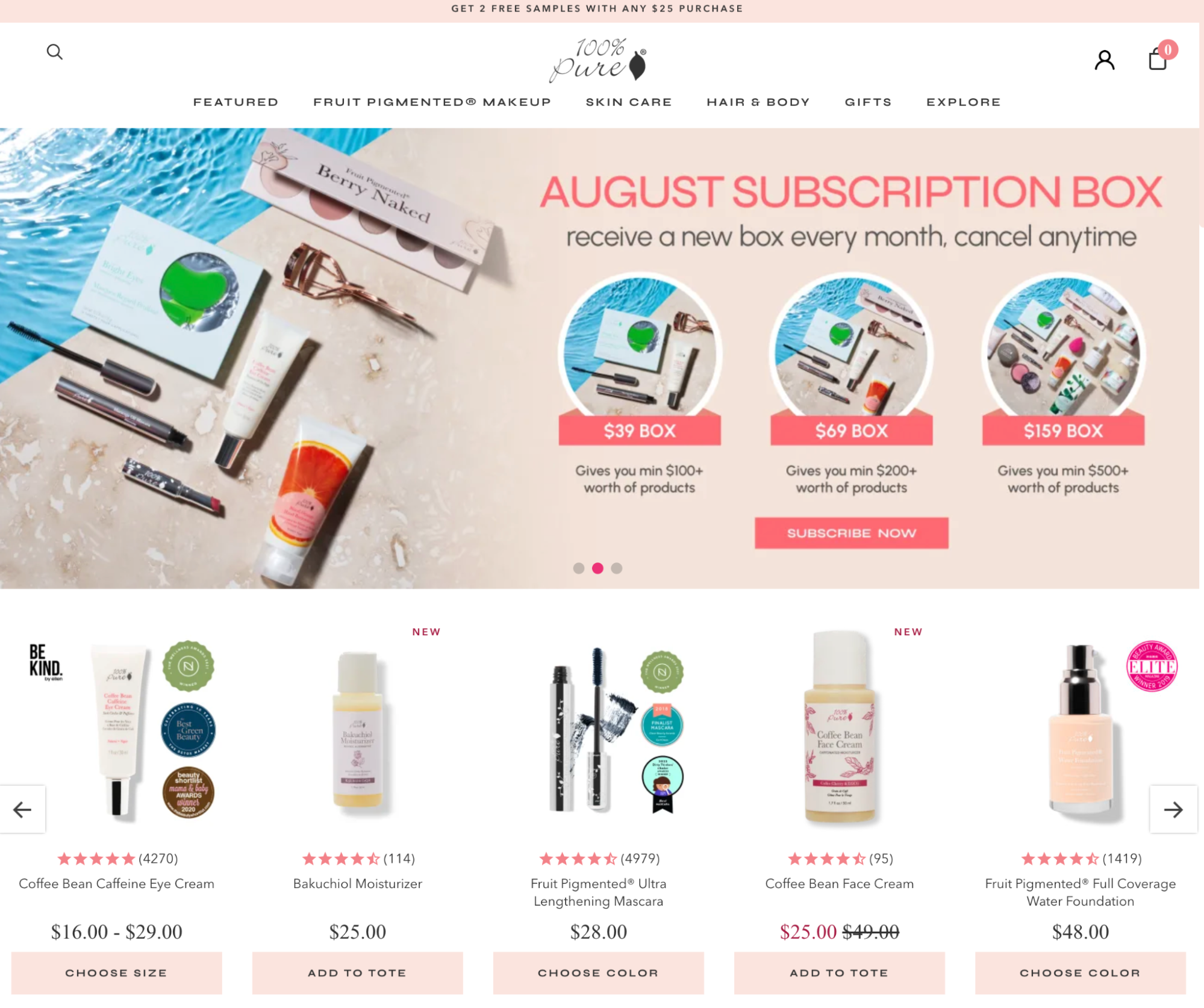
100% PURE promoting a monthly subscription box on its homepage.
The 100% PURE website doubles down on customer favorites: products with most reviews, awards, and purchases.
100% PURE rewards loyal customers. Its Purist Pro program for estheticians and makeup artists offers a 35% discount on most products and first access to new product launches, while the Purist Perks loyalty program includes seasonal savings, birthday gifts, free shipping, points based on customer spend, and more.
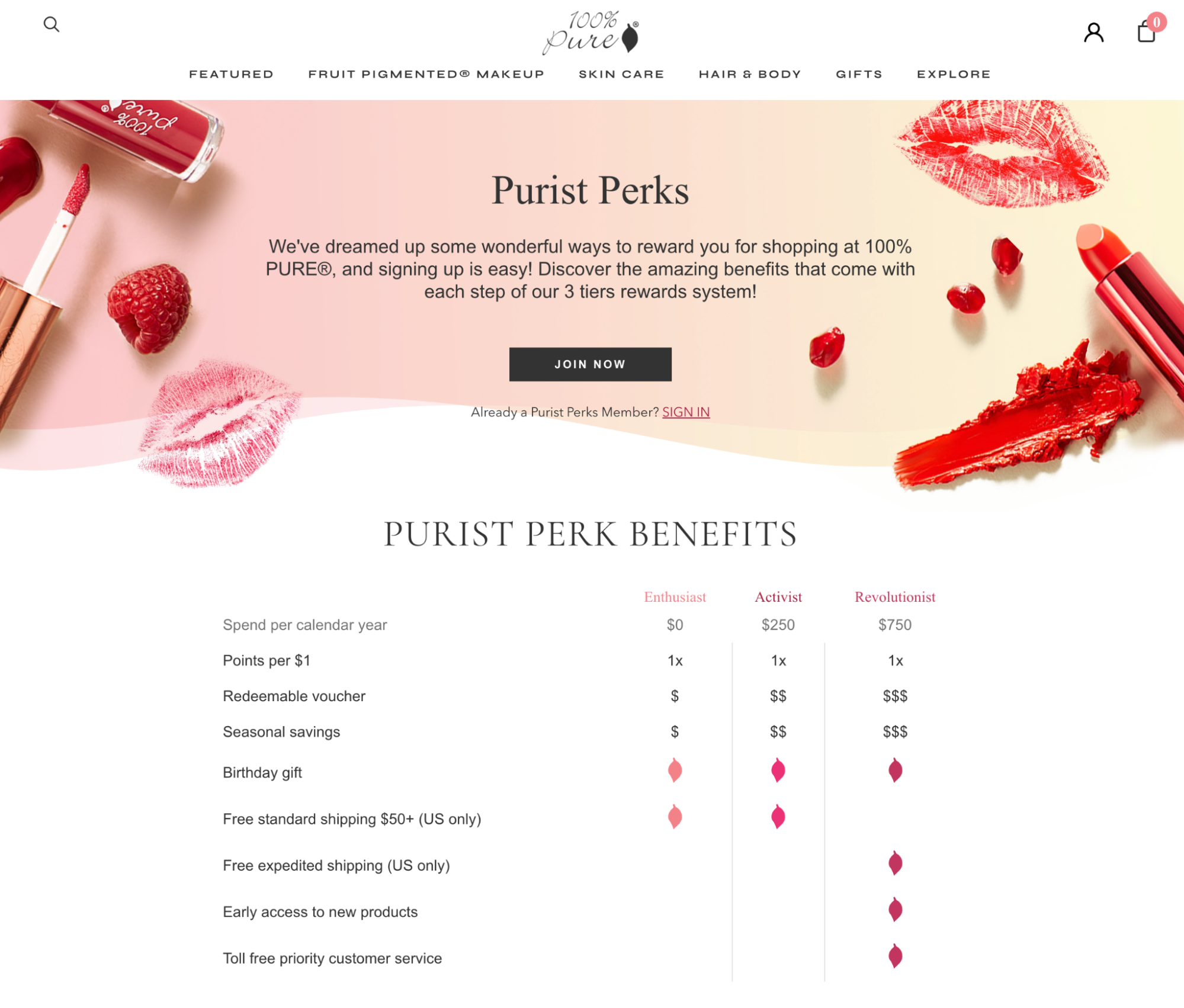
With in-store and international ecommerce efforts, the company’s goal is to create an effortless shopping experience for everyone. Easy country and currency selection plays a big role in it.
On top of that, its website needs to be fast, its inventory synced, and product information up to date.
This is where Shopify created a huge improvement. “It’s our customer-facing portal in different countries and allows us to custom code promotions, which have been extremely effective,” says Ric Kostick, the co-founder and CEO of 100% PURE.
It’s a powerful combination—the focus on customer reviews and feedback plus a smooth ecommerce operation—that created success for 100% PURE.
5. The Skin Nerd: Education first, products second
The Skin Nerd is an umbrella of skin-care-focused efforts: education, curated brands, and original products.
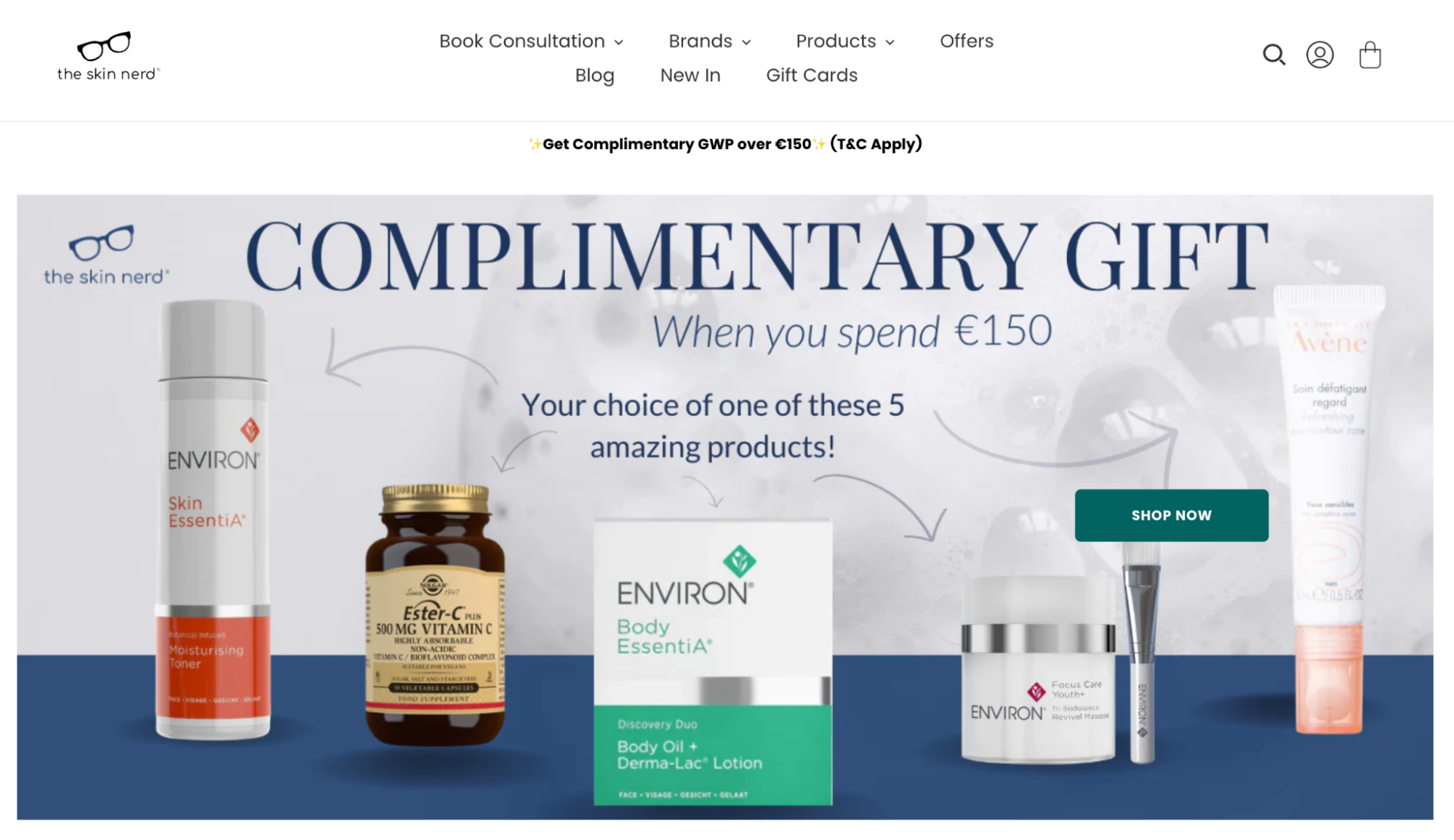
The Skin Nerd promoting a promotional gift for customers on its homepage.
Its website points to the key areas for those seeking tips and products to improve their skin: skin consultations, The Skin Nerd book, educational articles (dubbed “skinformation”), and latest products.
The Skin Nerd is a leading example of an education-first ecommerce company. According to its About page, “The Nerd Network was possibly the world’s first online skin consultancy.” Services include initial and follow-up skin consultations, as well as bridal bootcamps, pregnancy consultations, and teen skin consultations and demo days.
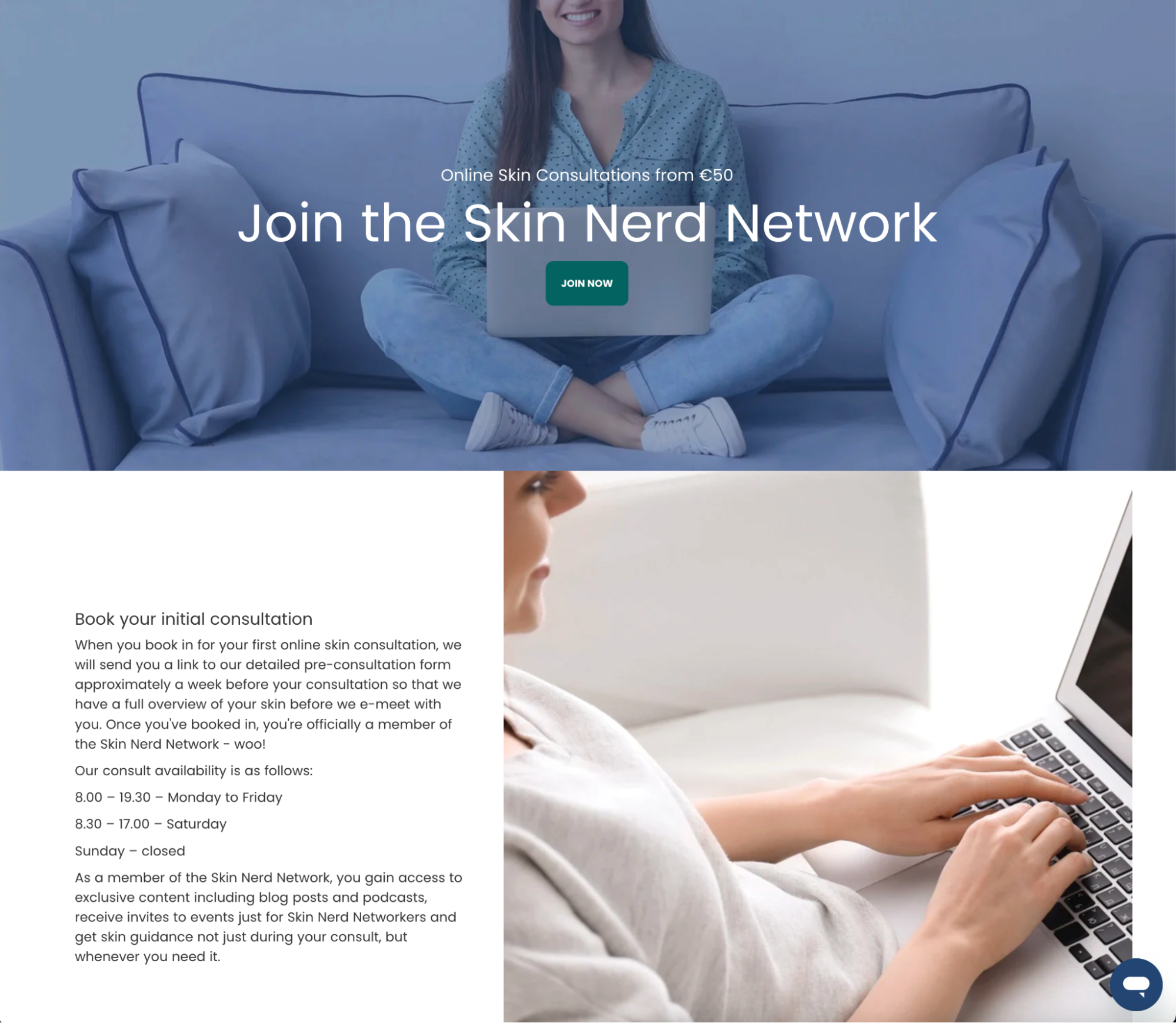
Browsers can easily book a skin consultation on The Skin Nerd’s website.
Customers that book a consultation become a member of the Skin Nerd Network, which offers exclusive content, invites to events, and long-term skin guidance.
After their consultation, customers receive a list of recommended products from dozens of brands, including The Skin Nerd’s Skingredients, all of which they can purchase from The Skin Nerd store.
6. Beard & Blade: Free returns as the ultimate quality promise
Beard & Blade is a men’s grooming supplies retailer based in Australia. It has served more than 300,000 customers since 2007, with products for shaving, hair care, beard care, and fragrances.
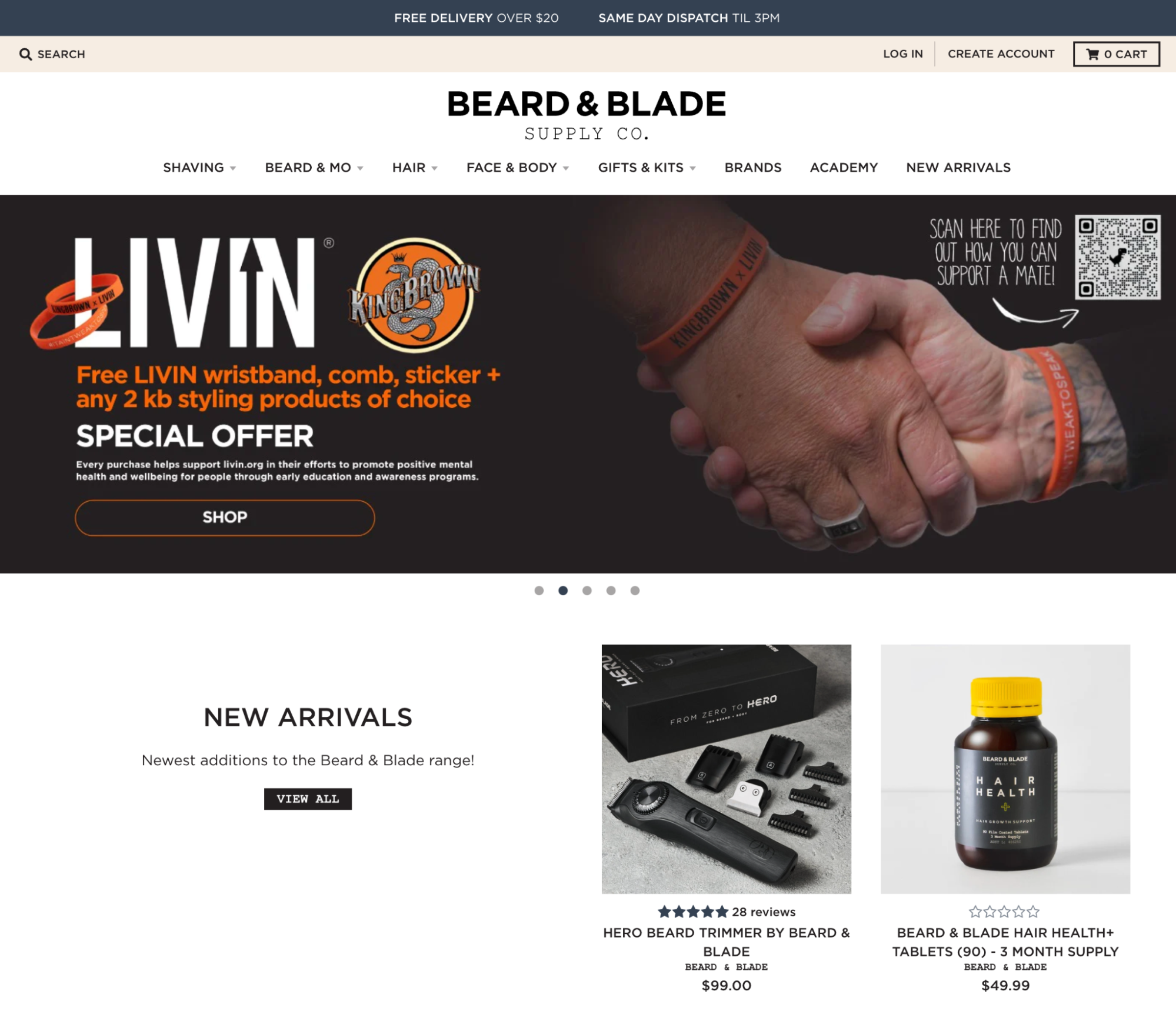
Beard & Blade promotes a special offer and new arrivals on its homepage.
Beard & Blade’s focus is a straightforward and speedy online shopping experience. Orders made by 3 p.m. are dispatched on the same day, and customers can choose to pick up their order from the brand’s Clayton, Victoria, warehouse within 15 minutes of payment.
A huge part of this customer experience focus is offering free returns for a full year from the order date.
“We don’t have products just for the sake of it. We honed in on what we are best known for, and that’s hair, shaving, and beard products,” Michael Muscat, co-founder of Beard & Blade, told Australia Post. “It means everything we sell is of high quality, so we were confident in offering free returns from day one.”
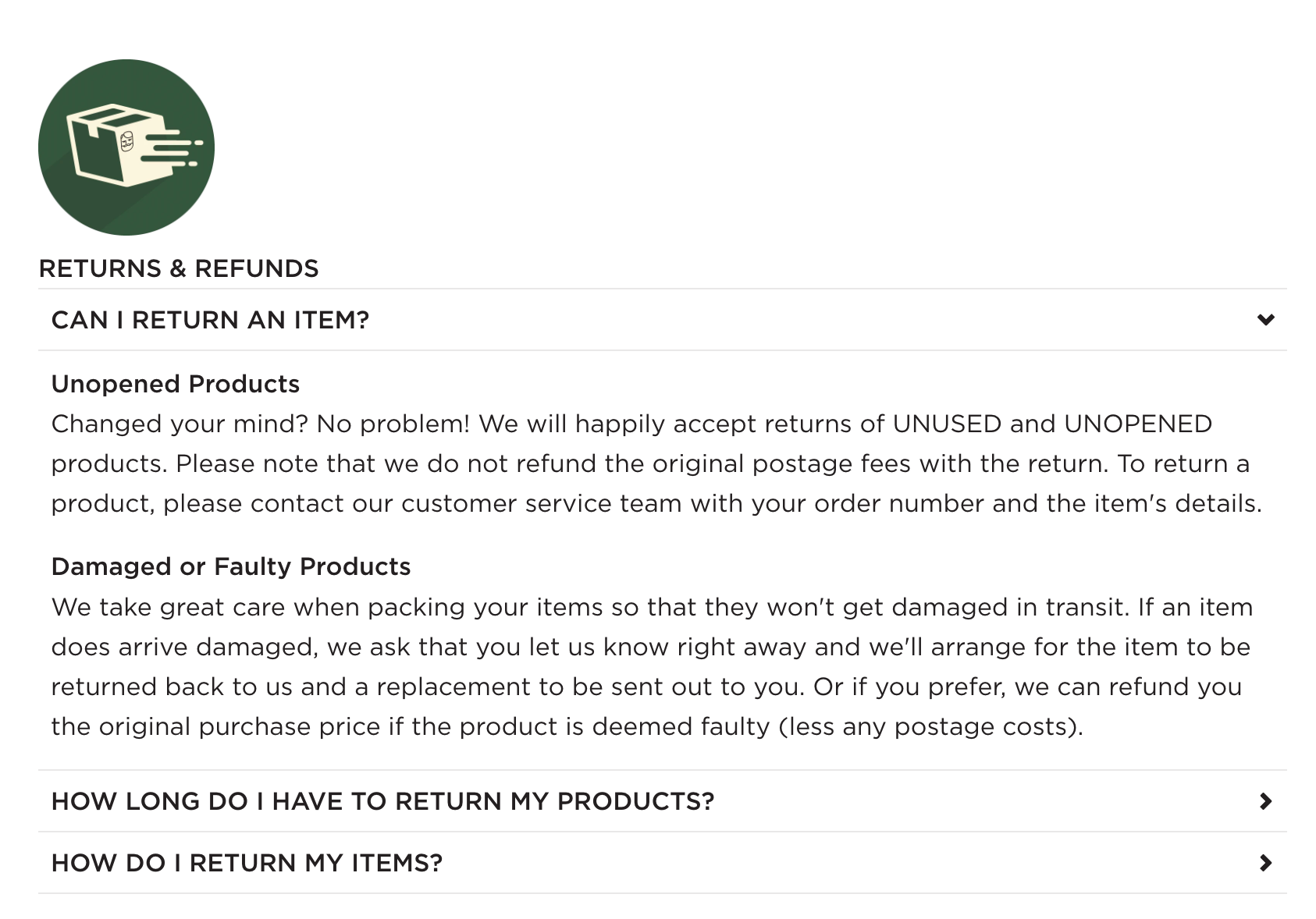
Information on Beard & Blade’s website about it’s return policy.
“These communities know they can rely on Beard & Blade to have all the products they need. We’ve developed a strong reputation as a market leader and an authority in men’s grooming, and customers recognize that through their interactions with us and through word of mouth,” Ben Chidiac, Beard & Blade’s co-founder, told Australia Post.
For Beard & Blade, the ease of shopping both as a consumer and a business is essential—and that strategy certainly created results.
7. Boie: Minimal product range with strong branding
Boie is an eco-friendly retailer of personal and oral care products. Its online store has a recognizable look: a clean, clutter-free design with a memorable color palette.
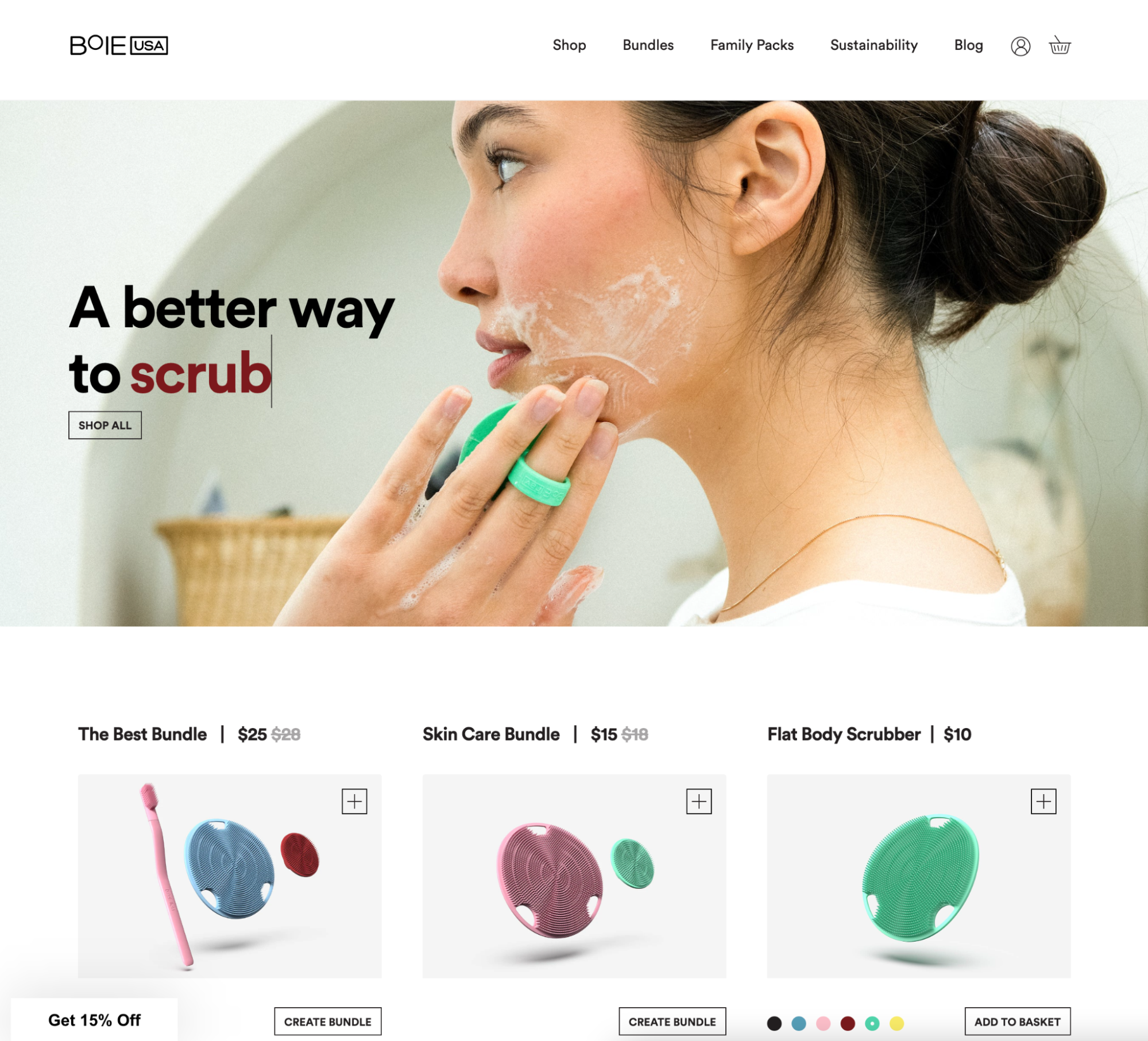
Eco-friendly beauty brand Boie’s homepage.
Boie has a streamlined product offering, with just four product categories—oral care, skin care, accessories, and bundles—and four or less products per category. Each product comes in the same six colors.
In 2018, Boie saw $1.1 million in sales, but had conversion rates below industry average and wanted to improve its organic search presence.
One of the upgrades was consistent branding through uniform colors and fonts, more prominent buttons, and clear copy. Another one was sharing social proof.
“A big thing was adding reviews to our website,” says Manuel de la Cruz, co-founder of Boie. “I think seeing other customers’ experience with our products helped increase our conversion rate.”
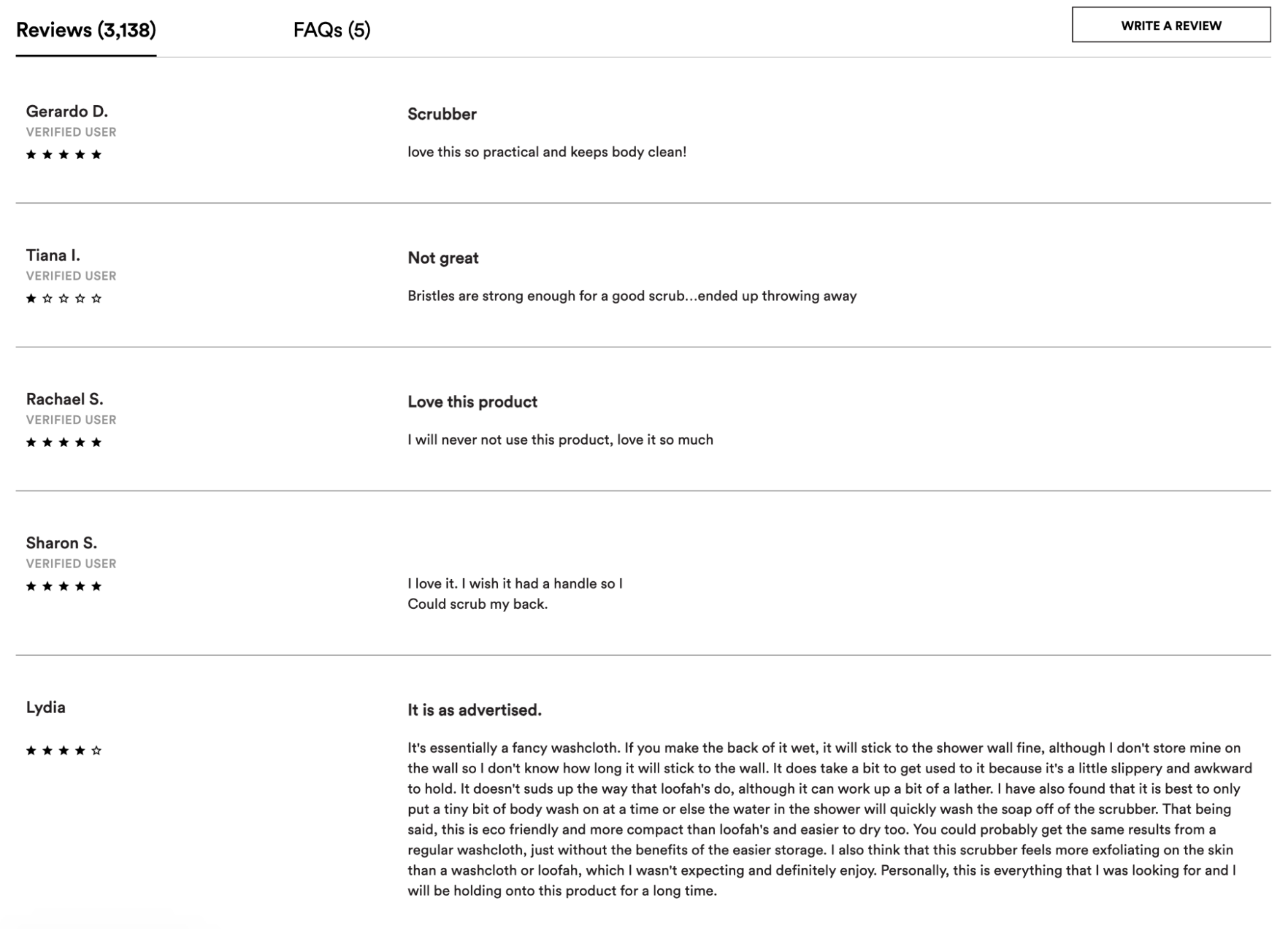
Boie includes product reviews on every product page to increase conversions.
Using these strategies, Boie increased its sales by 100% within a year. Having a clear focus—and a simple, clear website that supports it—helped Boie exceed its revenue goals, while staying true to its mission of making personal care more sustainable and planet-friendly.
8. Soft Services: A resource that helps people feel good in their skin
Soft Services offers products, guides, and digital tools that help people with skin concerns. Its mission is to reduce physical and digital waste in this industry and the world.
In their own words, the Soft Services team see themselves as more than a brand or a company that makes things, and consider what they do a service—hence the name.
Soft Services’ website stands out through its unconventional layout and design:
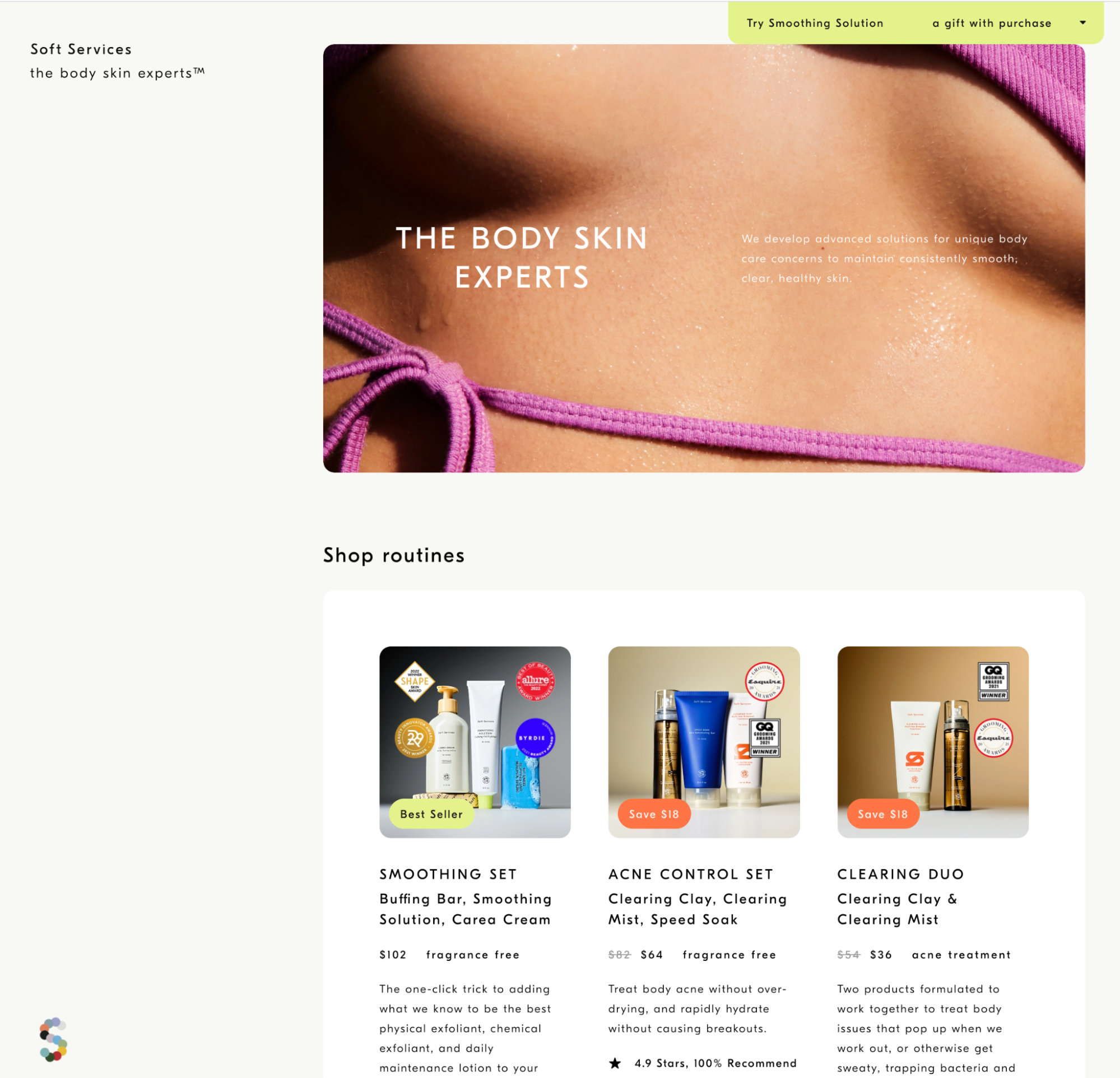
Soft Services uses a unique ecommerce website layout to attract visitors.
Its distinctive product pages follow suit. The section that stands out is the list of “Good for” and “Not good for” skin conditions:
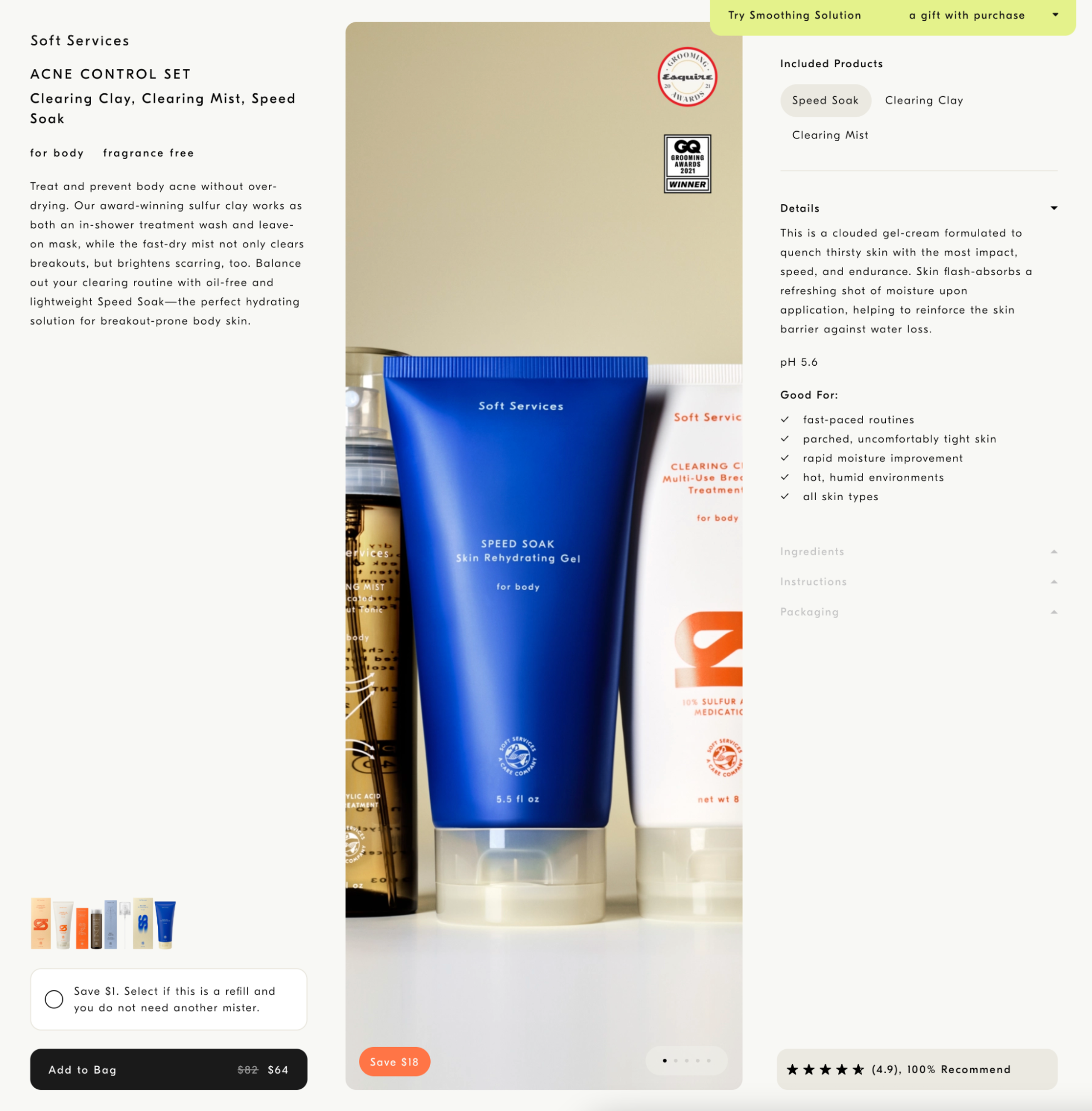
Customers can quickly understand if a Soft Services product is right for them.
This is aligned with Mass Index, a resource by Soft Services that houses expert articles, treatment information, and a growing visual library of all types of body skin.
Mass Index aims to fill the knowledge gap left by the skin and health care sectors about a broad range of skin conditions, from body acne and clogged pores to fungal infections and psoriasis.
“We want people to go from having a body issue that they’re stressed about to feeling empowered, and that’s through products and breaking down cultural taboos,” Rebecca Zhou, co-founder of Soft Services, told Byrdie.
Mass Index and the company’s mission are bigger than Soft Services’ products. According to the brand’s site, “Mass Index was created as a place to document research and share it with people searching for solutions, even if not our product.”.
This effort makes Soft Services a go-to resource for skin concerns and solutions and builds trust with the people they reach through it.
9. Blume: Challenging the status quo with a bold mission
Blume is a skin, body, and period care retailer focused on clean, gentle ingredients. Blume serves girls and women of all ages looking to elevate their self-care routine and daily rituals.

Blume highlights its reviews and awards recognition on its homepage.
“We wanted to start Blume to make an impact and take on an industry that has had little innovation for over 100 years. Seventy-nine percent of us use the same products that our moms did,” Taran and Bunny Ghatrora, Blume’s co-founders, shared with Ecommerce Magazine. “This means that 79% of us are still using outdated, potentially problematic products simply because we were introduced to them when we were younger.”
Blume’s product range includes natural deodorants, organic tampons and pads, and face products like clay masks, moisturizers, and acne oils.
Each product page features key information like frequency of use, scent, skin type, instructions, key ingredients (and their benefits), and other complementary Blume products.
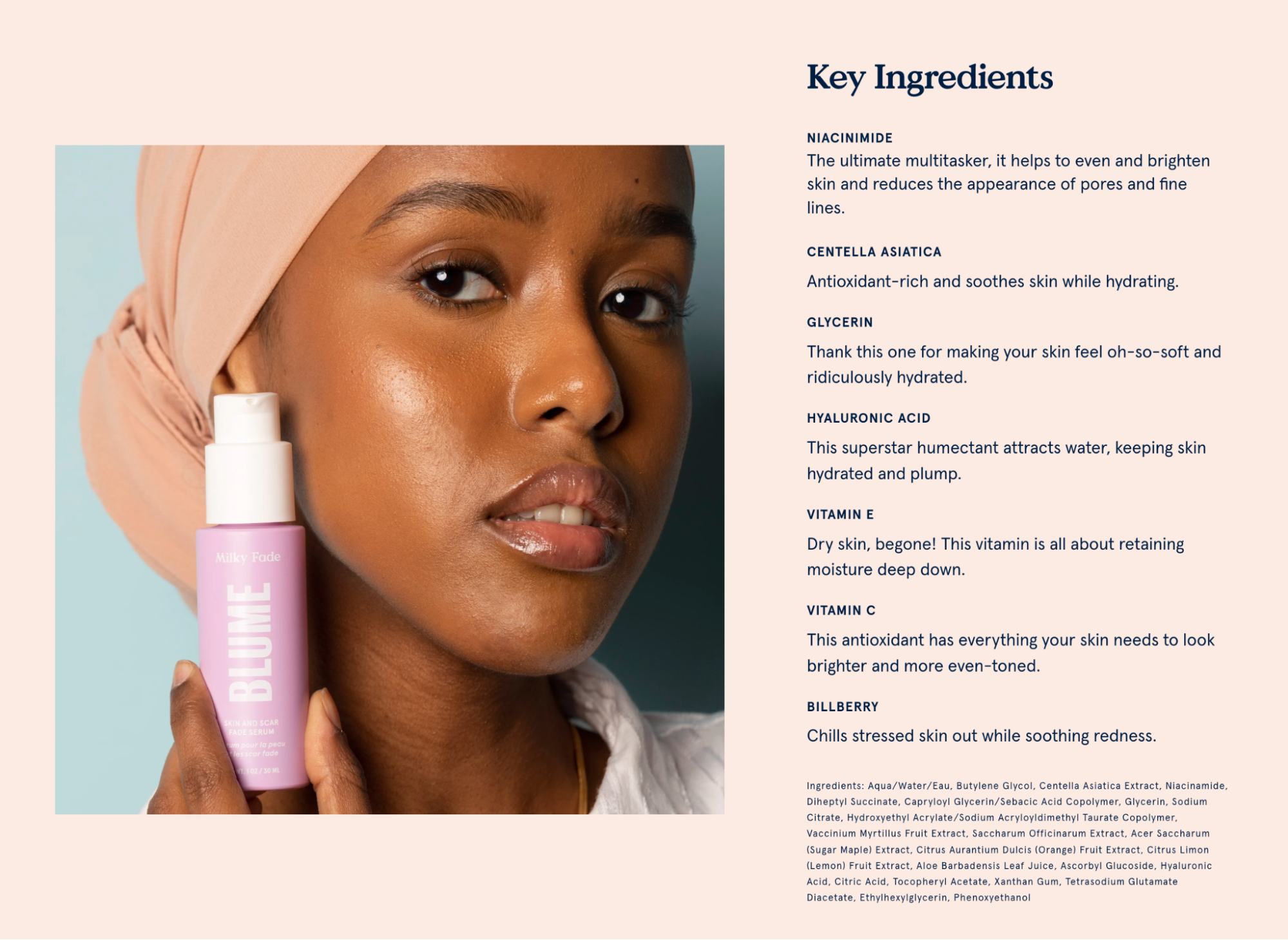
Blume shares information about its products on its website.
Blume aims to make self-care easier and healthier and destigmatize normal things like acne, periods, puberty, and sex education, which it achieves through clean products and sex ed resources that knock down taboos and create important conversations.
Stay on top of the beauty industry
From clean products and protecting the planet to educating customers and helping them feel good about their body and the products they put on it, these beauty ecommerce brands and online stores can inspire your next move. Beauty is personal, so make sure your customer journey is too.
You can make these inspirational examples even more powerful by combining them with insights we've pulled from a massive set of internal data—a sampling of more than 875 million people who shop at businesses on Shopify. Besides being one of the top industries when ranked by overall order volume, the health and beauty industry is also propelled by key sales channels like direct and affiliate, which top out the marketing channels for health and beauty when ranked by average order volume.
This is just a small sampling of the insights available in our Ecommerce Growth Guide, which combines these key trends with the tools and technology you need to act on them. Equipped with all this, you'll be ready to build a long-term strategy to drive sustainable growth.
Read more
- Best Ecommerce Articles of 2018 with 10 Lessons to Guide You into the New Year
- Social Commerce Strategy: Improve Your Social Selling With These 9 Best Practices
- 15 Fitness Ecommerce Websites: Beyond Bodies into Growing Global Brands
- Food Ecommerce: What Awaits The Food, Beverage and CPG Industry
- Best Ecommerce Tips from 10 of the Most Valuable Articles Last Year
- 10 Lessons From the Fastest Growing Consumer Electronics Websites
- How Luxury Fashion Is Embracing Inclusive Sizing
- 11 Ecommerce Checkout Best Practices: Improve the Checkout Experience and Increase Conversions
- What 1-Click Checkout Can Do for Your Small Business


